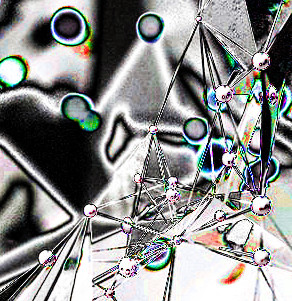Crystal mystery found in fertiliser
 A common ingredient in fertiliser appears to share some characteristics with mysterious ‘time crystals’.
A common ingredient in fertiliser appears to share some characteristics with mysterious ‘time crystals’.
In normal crystals, the atoms are arranged in a grid. This means that they form an atomic lattice shape that repeats in space, but not in time.
The atoms inside time crystals are constantly oscillating, and their spin can be reversed by targeted electromagnetic pulses.
Discrete time crystals (DTCs) have only once been observed in a solid crystal, when physicists created a time crystal from a nitrogen-vacancy diamond.
But some DTC aspects have been found in monoammonium phosphate (MAP) - a compound in fertiliser and crystal-growing kits for kids.
“We decided to try searching for the DTC signature ourselves,” says physicist Sean Barrett, senior author on two new papers.
“My student Jared Rovny had grown monoammonium phosphate (MAP) crystals for a completely different experiment, so we happened to have one in our lab.”
Previously, crystal signatures were believed to occur only within a disordered environment, but after
monoammonium phosphate crystals were subjected to nuclear magnetic resonance, they revealed clear time crystal signatures - inside a highly ordered spatial crystal.
“Our crystal measurements looked quite striking right off the bat,” Barrett said.
“Our work suggests that the signature of a DTC could be found, in principle, by looking in a children's crystal growing kit.”
Time crystals have some exciting practical applications, such as improving the accuracy of atomic clocks, gyroscopes, and systems that synchronised clocks, like GPS.
The research has been published in Physical Review Letters.








 Print
Print